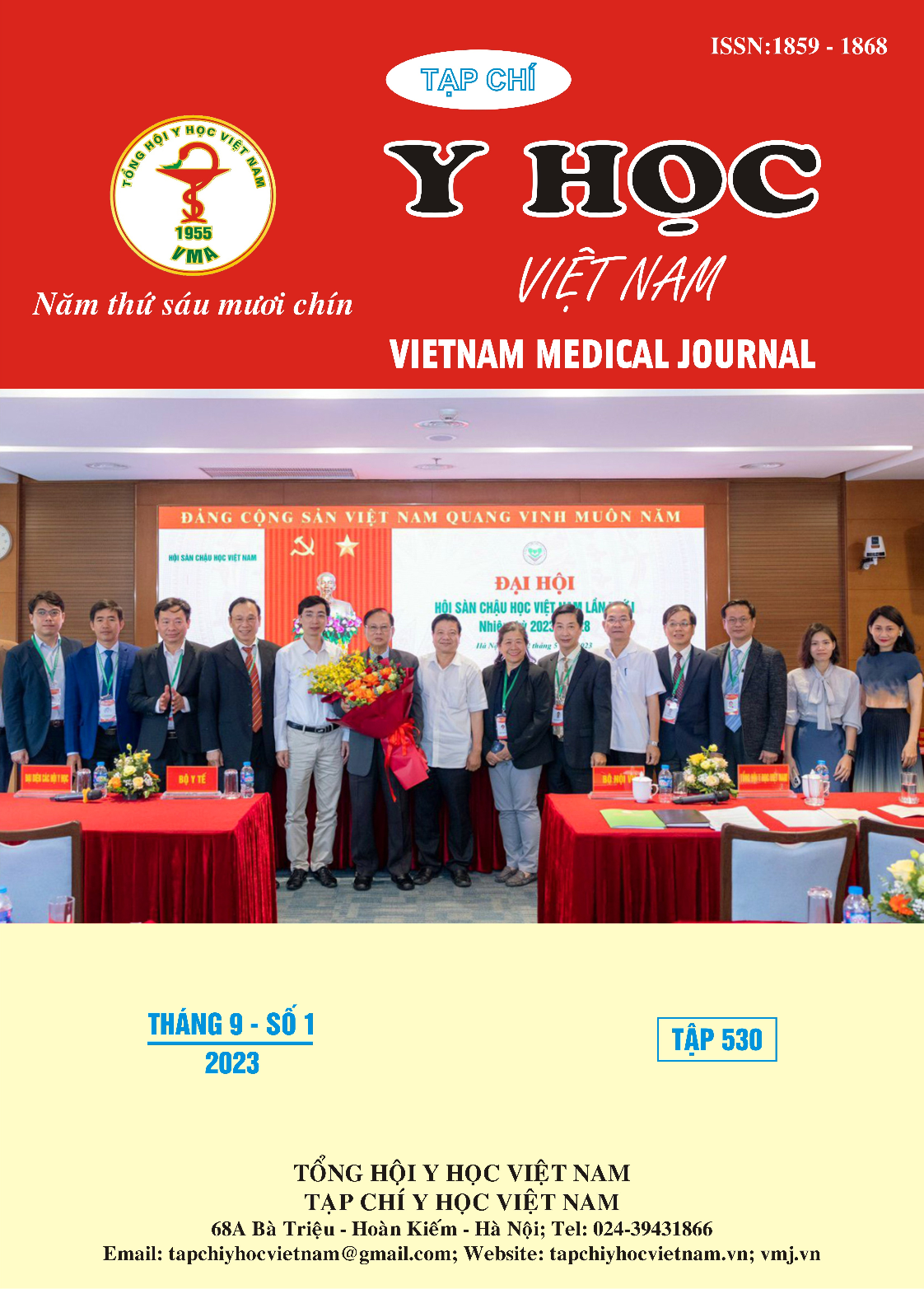CURRENT SITUATION AND DEMAND FOR CONTINUING MEDICAL EDUCATION (CME) FOR OF CLINICAL NURSES IN VINH PHUC PROVINCE
Main Article Content
Abstract
Objectives: To describe the current state and determine the requirements for continuing education (CE) of clinical nurses in Vinh Phuc province from 2019 to 2022. Subjects and method: A cross-sectional descriptive study, combining quantitative and qualitative, was conducted on 677 clinical nurses working in Vinh Phuc province from February 2022 to October 2022. Results: Although 100% of nurses participated in clinical training from 2019 to 2022 (n=677), only 39.6% attended the requisite number of sessions. The majority of training programs are short-term (52.3%); the training content is mostly technical skills and communication; training in scientific research accounts for just 30.7%. Most of the research subjects have training needs in Advanced Qualification (79.5%) and Nursing Technical Skills (69%). In which, the need for training in performing first aid techniques accounts for the highest rate (90.7%), followed by Ambu ball squeeze and extra-thoracic compression (73.1%). The Intubation Intubation Technique (87.9%) and the Intubation Assistance Technique (74.6%) have the greatest proportion of training demands among difficult nursing methods. Conclusion: Although 100% of nurses participated in the CME program, only 39.6% attended the requisite number of classes. The nursing program focuses on nursing technical skills, scientific research training, and a variety of complicated nursing procedures that have not before been focused on. Most nurses need training to advance their professional credentials, communication skills, and scientific research.
Article Details
Keywords
Continuing education, nurse, CE
References
2. Bộ Y Tế Thông tư 22/2013/TT-BYT hướng dẫn đào tạo liên tục y tế.
3. Thu N.T.H. và Luyến Đ.T. (2020). Nhu cầu đào tạo liên tục của điều dưỡng viên bệnh viện tuyến huyện tỉnh Bắc Giang giai đoạn 2016-2017. Tạp chí Nghiên cứu y học, 129(5), 14–22.
4. Chong M.C., Francis K., Cooper S. và cộng sự. (2014). Current Continuing Professional Education Practice among Malaysian Nurses. Nurs Res Pract, 2014, 126748.
5. Eslamian J., Moeini M., và Soleimani M. (2015). Challenges in nursing continuing education: A qualitative study. Iran J Nurs Midwifery Res, 20(3), 378–386.
6. Ni C., Hua Y., Shao P. và cộng sự. (2014). Continuing education among Chinese nurses: A general hospital-based study. Nurse Educ Today, 34(4), 592–597.
7. Shahin M. (2019). Critical Care Nurses’ Perceptions about the Continuing Nursing Education at Saudi Hospitals: Educational Needs and Universities’ Role. Merit Research Journal of Medicine and Medical Sciences, 7, 155–165.
8. Yu X., Huang Y., và Liu Y. (2022). Nurses’ perceptions of continuing professional development: a qualitative study. BMC Nurs, 21, 162.


